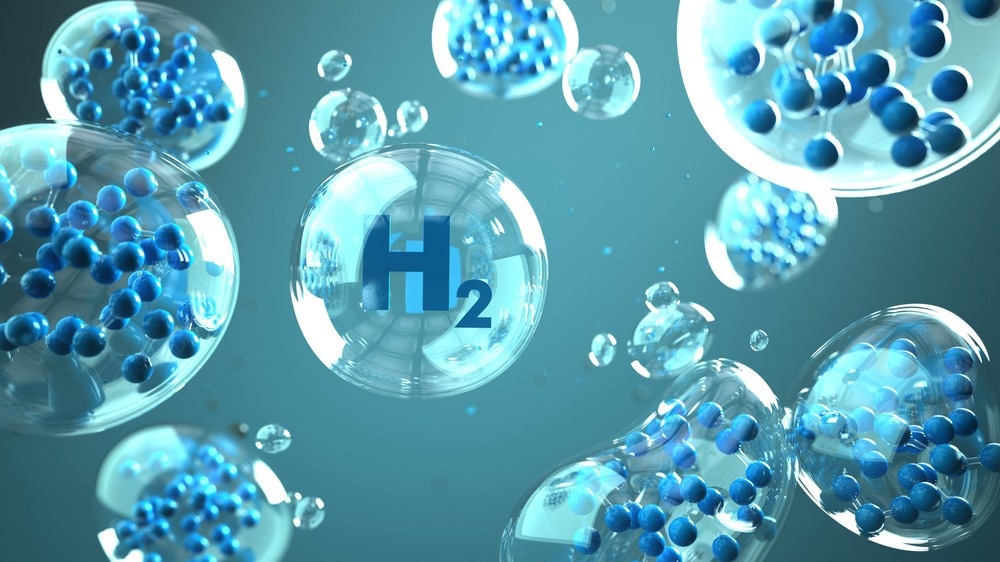A new paper in the Journal of Colloid and Interface Science has explored the creation of hydrogen-bonded clusters in hydrogels and the influence of network structure on the relationships between their structure and properties. The research has been conducted by scientists from New Zealand and Australia.

Study: Hydrogen bonding dissipating hydrogels: The influence of network structure design on structure-property relationships. Image Credit: Alexander Limbach/Shutterstock.com
How Can We Improve the Mechanical Properties of Hydrogels?
Hydrogels are a class of emerging materials that have found key applications in biomedicine, wearable electronics, and other commercial, industrial, and research fields. This family of soft, hydrated materials can mimic natural tissues, and research has focused on improving their mechanical properties to match those of native tissue.
Currently, there are crucial challenges in designing hydrogels with combinations of controlled mechanical properties, adhesiveness, and self-healing behaviors that mimic organic tissue. To achieve this combination, research has focused on the development of hydrogels with semi-interpretating or double networks.
One strategy explored recently is the synthesis of polymer networks possessing non-covalent interactions. This method involves using long networks of either synthetic polymers or biopolymers which are held together by hydrogen bonds, ionic interactions, or hydrophobic interactions.
Incorporating Hydrogen Bonding
The authors of the new paper previously studied the incorporation of small amounts of tannic acid into cross-linked PAAm hydrogel networks to investigate the mechanical property improvements of hydrogen bonding. This research confirmed that small amounts of hydrogen bonding can enhance the hydrogel network’s toughness and stiffness.
Tannic acid polyphenols functioned as hydrogen bond donors, confirmed by reductions in swelling behaviors and the observation of higher yields in tensile measurements. Furthermore, the authors observed a temperature-dependent phase transition in the hydrogels around 40 oC. The toughness, modulus, and compressive and tensile strength of polymerized tannic acid-incorporated gels were markedly higher than those incorporating unpolymerized tannic acid.
Whilst great strides in improving the mechanical properties of hydrogels have been made, the molecular mechanisms behind hydrogen bonding-driven property enhancements are still unclear. Several analytical techniques have been employed to provide valuable insights into this research question, such as polarized optical microscopy, SEM, small angle scattering (SAMS), and small angle X-ray scattering (SAXS.)
The Paper
The new paper aims to unveil the molecular-level structure-property relationships in PAAm hydrogels which incorporate tannic acid (polymerized and unpolymerized) and the effects of hydrogen bonding on their mechanical properties. SANS, USANS, SAXS, rheological measurements, and a Mueller matrix imaging system (with mechanical tester) are employed to provide analysis of the hydrogels.
The study hypothesized that temperature changes in these hydrogen-linked hydrogels cause changes in their structure and function. Hydrogels ranging in length from 1-20 µm were evaluated in the research.
To investigate and unveil how mechanical properties change with temperature, both SAXS and SANS measurements were made above and below the gel’s upper transition temperature. Rheological analysis of the prepared hydrogels further confirmed the temperature-dependent mechanical property changes in the material samples. Additionally, self-healing step strain experiments were employed to evaluate the functional behaviors of the prepared hydrogels.
Study Findings
Temperature-dependent structural changes were unveiled in both types of hydrogels by SAXS and SANS analysis. USANS revealed that at higher concentrations of tannic acid, micro-scale aggregates are formed within the hydrogels. Hydrogen-bonded aggregate size was reduced in both types of hydrogel samples when the temperature increased.
PAAm hydrogels with polymerized tannic acid displayed a concentration-dependent change in optical properties. Dissipation in polymerized gels occurred, even at elevated temperatures, but this was not the case in unpolymerized gels. Rheological measurements at different temperatures confirmed this behavior.
Self-healing behavior was observed in both the polymerized and unpolymerized tannic acid-incorporated hydrogels, with the time of recovery proportional to tannic acid concentration. The results of structural change measurements confirmed the efficaciousness of a combined polarized optical microscopy/small angle scattering technique analysis approach.
Functional property changes were confirmed by rheological approaches, demonstrating that they are reflected in the characterization of the hydrogel’s mechanical properties.
The study’s observations and confirmation of the unique changes in mechanical and functional properties in the hydrogels is due to the polymerized tannic acid networks. Tannic acid imparts the hydrogels with multivalent hydrogen bonding sites as well as potential hydrogen entanglements with the hydrogel’s primary network.
In Summary
In summary, the paper has provided a thorough characterization of polymerized and unpolymerized tannic acid-incorporated hydrogels, revealing the influence of hydrogen bonding on their structural and functional properties.
Previous studies have employed small angle scattering techniques for this purpose, but the current paper improves on these by providing an in-depth characterization of nano- to micron-regime structure-property relationships in hydrogels that incorporate oligomers. The authors have stated that this study will aid the rational design of hydrogels with enhanced mechanical and functional properties in the future.
More from AZoM: How are Bioplastics Made?
Reference
Narasimhan, B.N., et al. (2022) Hydrogen bonding dissipating hydrogels: The influence of network structure design on structure-property relationships Journal of Colloid and Interface Science [online] sciencedirect.com. Available at: https://doi.org/10.1016/j.jcis.2022.10.029
Disclaimer: The views expressed here are those of the author expressed in their private capacity and do not necessarily represent the views of AZoM.com Limited T/A AZoNetwork the owner and operator of this website. This disclaimer forms part of the Terms and conditions of use of this website.